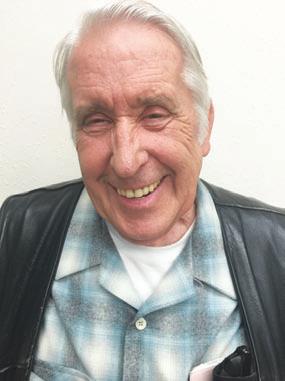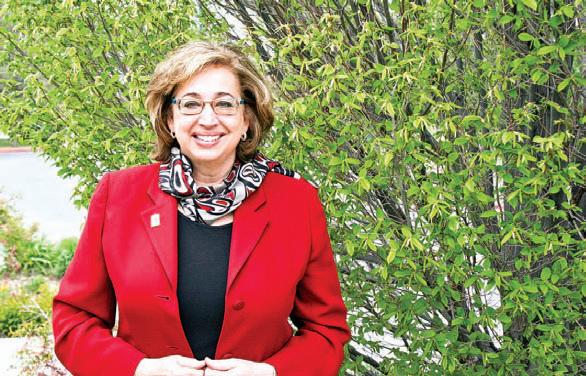
4 minute read
Green
from May 5, 2016
WHAT LED YOU TO INVENT THE PANIC STOP ALERT?
In 2006 I was in a rear-end collision. I was on interstate 80, driving in the fast lane in a 2002 Toyota Tundra pick-up truck. I began to slow down as I realized the vehicles in front of me had all come to a complete stop. While stopped, I looked in my rear-view mirror and saw a lady in a four door sedan pull up right on my bumper. I saw another car quickly approaching who appeared not to realize that traffi c had stopped. The third car slammed right into the poor lady behind me which pushed her into me. Her car was sandwiched between the two vehicles. This is when I realized, after my accident, that many rear collisions could be prevented if the driver behind was aware of what was going on. As a result I started turning on my emergency fl ashers when situations seemed precarious.
Advertisement
What was the result of turning on your emergency fl ashers when making a “panic stop”
I found that no one would come close to me. Everyone backed off. If you see amber fl ashing lights it will catch your attention a lot quicker than the traditional red light.
How did your rear-end collision result in the Panic Stop Alert?
I knew that in a panic stop I would not have time to manually turn on my fl ashers. I needed something that would trigger my fl ashers automatically. But there was nothing out there. This led me to invent the Panic Stop Alert. I met with an engi- Ron Long, CEO Panic Stop Alert neer here in Reno, NV who helped me turn my ideas into reality. 10 years later, Panic Stop Alert with Watch My Back is still manufactured and engineered in Reno, NV.
How does Panic Stop Alert work?
Panic Stop Alert activates the vehicles emergency fl ashers if a “panic stop” is made. It turns off after 10 seconds.
What is Watch My Back?
Watch My Back activates the vehicles emergency fl asher when in reverse, turning off after moving forward.
How is Panic Stop Alert installed into the vehicle?
All Panic Stop Alerts are professionally installed by Nevada Auto Sound located at 2966 S. Virginia St. Reno, NV 775-825-8496
How do I get a Panic Stop Alert in my vehicle?
Check us out online at panicstopalert.com or call us at 775-722-2861
Only $245 With This Coupon! Includes Installation & Tax!


PHOTO/KELSEY FITZGERALD
City Council Member Naomi Duerr is working with the Urban Forestry Commission to increase Reno’s tree canopy.
Urban jungle
Restoring Reno’s tree canopy
City Council Member Naomi Duerr and the Urban Forestry Commission are on a mission to bolster Reno’s disappearing tree canopy through a new by program called ReLeaf Reno. The program, which launched on April 29, Kelsey will fund the planting and maintenance of new trees in parks and public
Fitzgerald areas around the City of Reno, and will encourage local residents to take personal responsibility for trees that grow on and around their properties. “We’re going to be basically be making a call to action for citizens to adopt a tree,” Duerr said. According to Duerr, a new tree inventory and management plan to be released by the Urban Forestry commission in May shows that Reno’s urban tree canopy has decreased since the time of the last inventory in 1998. Reasons for tree losses include drought, budget cuts during the recession, disease, bugs and old age. “I think we’ve found that we’ve lost about five to 10 percent of our canopy over 18 years,” Duerr said. “That’s on public space. On private space, we’ve lost more.” To combat tree losses, ReLeaf Reno will provide information to the public on how to care for trees, and recognize members of the community who are already taking care of city trees. Duerr has donated $10,000 from her council donation fund toward the ReLeaf Reno project, and hopes to match that money with contributions from other donors. “In just one week since we’ve had the soft launch of this, we’ve gotten almost $10,000 in private contributions,” Duerr said. “My goal, and the Urban Forestry Commission’s goal, is to raise about $100,000. It wouldn’t just be used to buy trees, but also to install the trees—to get the hole dug, the tree in place, and to maintain it for its first year.” Potential benefits of urban trees are many. Trees provide shade, reducing air temperature by blocking sunlight. They act as wind-breaks and help buffer noise. Trees improve air quality by absorbing CO2 and other gases, and releasing oxygen. They provide habitat for wildlife and have social benefits as well.
For information on Recently, planning experts from the Urban Land Institute made Reno’s urban forests, recommendations for how to improve Reno’s Virginia Street corridor.including a list of recommended street trees, visit the Urban “One of their big recommendations, especially along Virginia Street, was trees, trees, trees,” Duerr said. “They wanted to see trees downtown, Forestry Commission’s midtown, up by the University, across from the Convention Center— web page: www.reno. everywhere. They know that the presence of trees increases the value of gov/government/ departments/ parks-recreationproperty by about 15 percent.” Although Reno’s high desert landscape might not naturally have so community-services/ many trees, Duerr believes that the city needs them—especially for the parks-trails/urban- cooling effect that they can provide in areas dominated by concrete and forestry asphalt. “Houses, roads weren’t here naturally,” Duerr said. “We came, and we’ve added a lot of elements to this basin. We’ve added an airport, we’ve added hundreds of miles of roads. We’ve added thousands of buildings. We have about 100,000 homes. None of that was here naturally either. It’s basically mitigation effect. If you’re going to plant concrete, you need to also plant trees.” Ω










